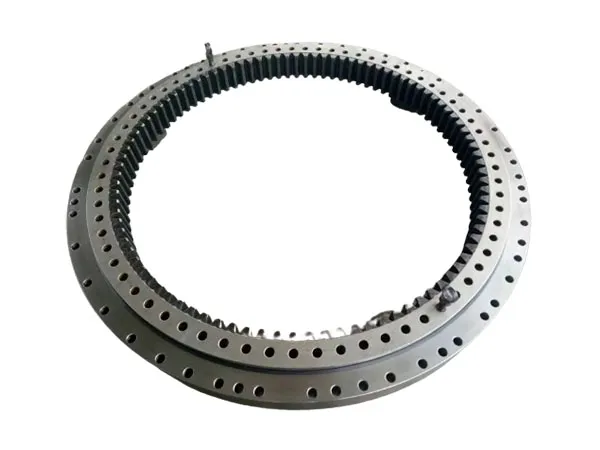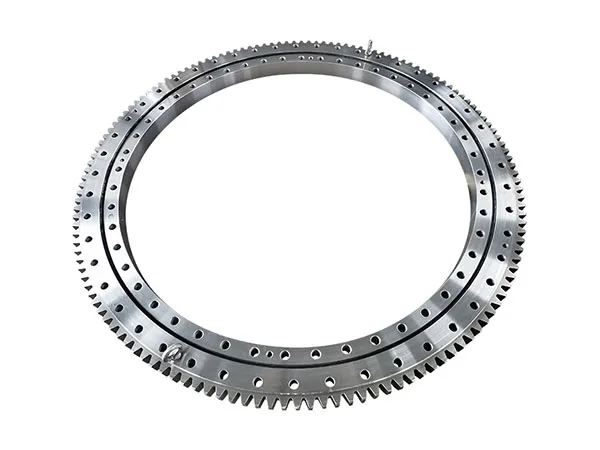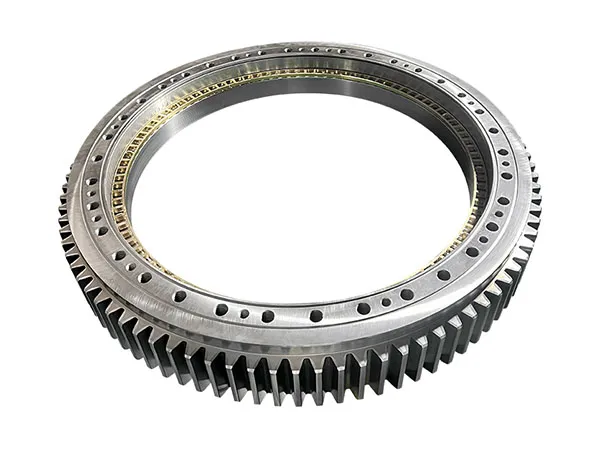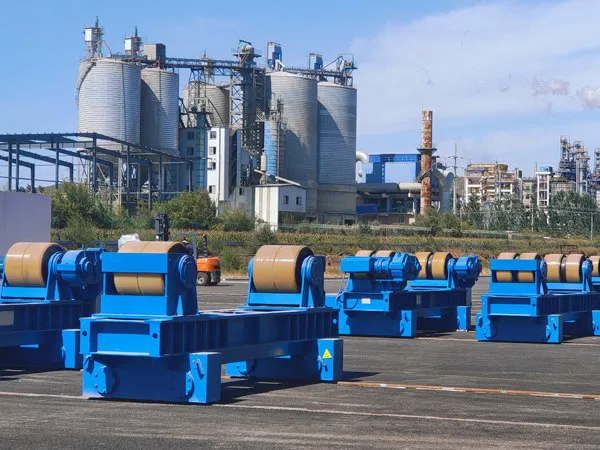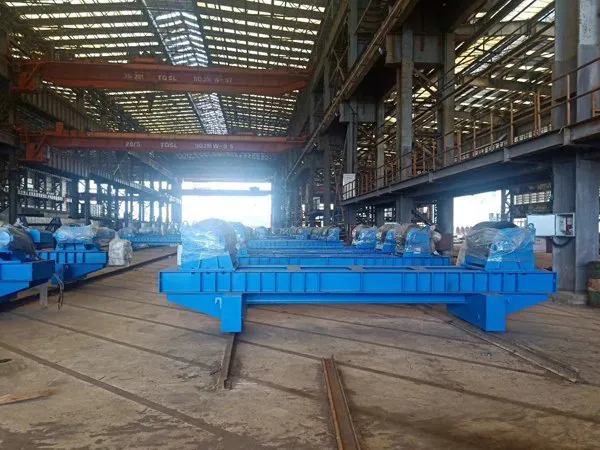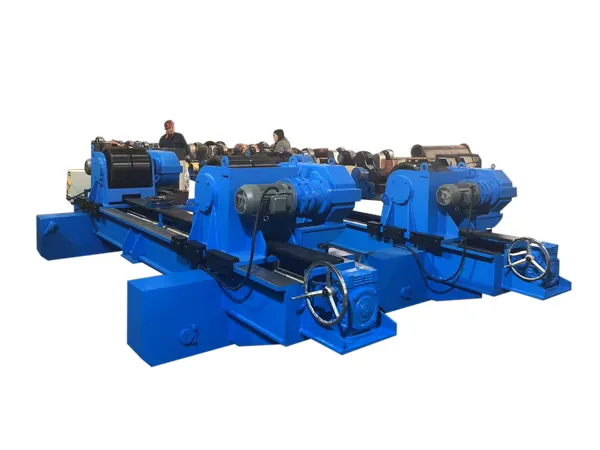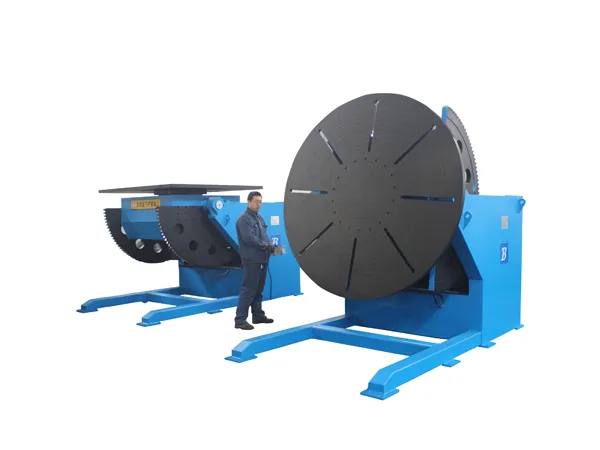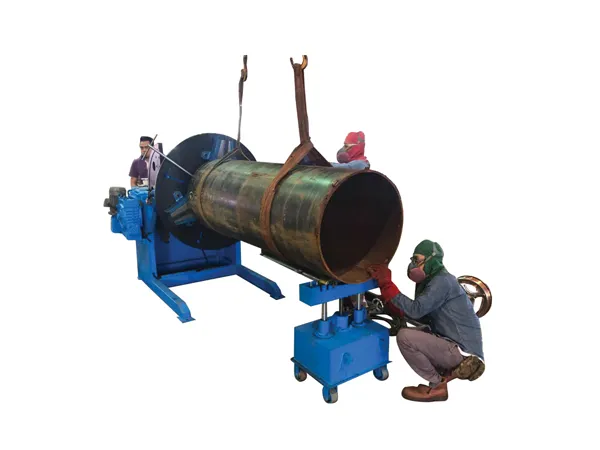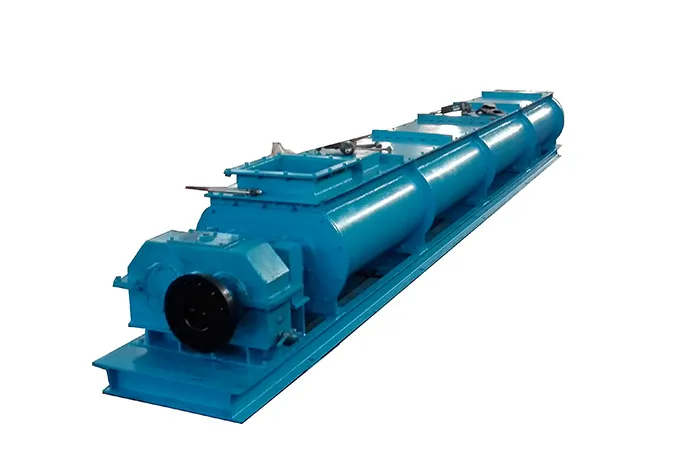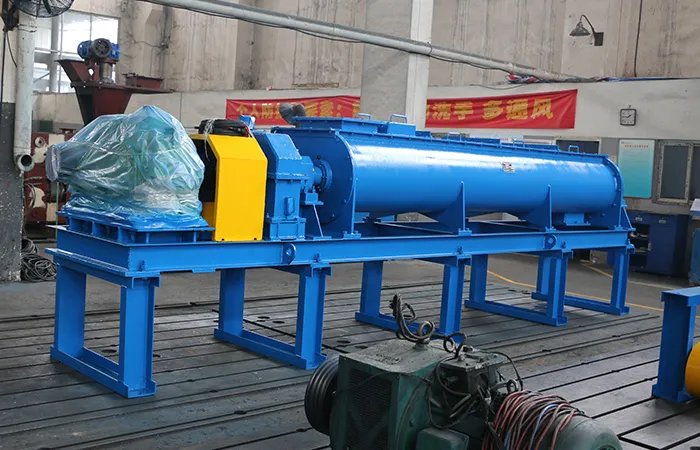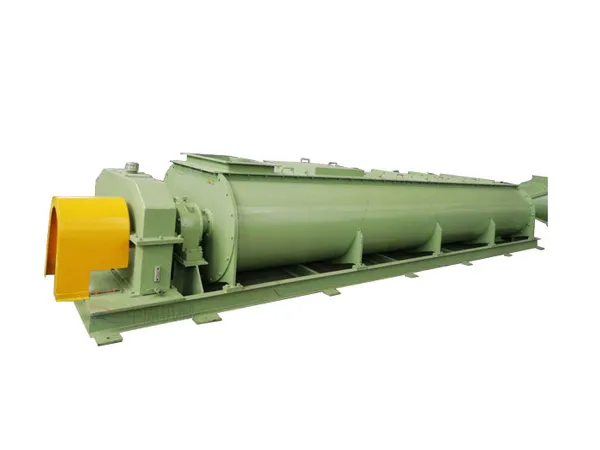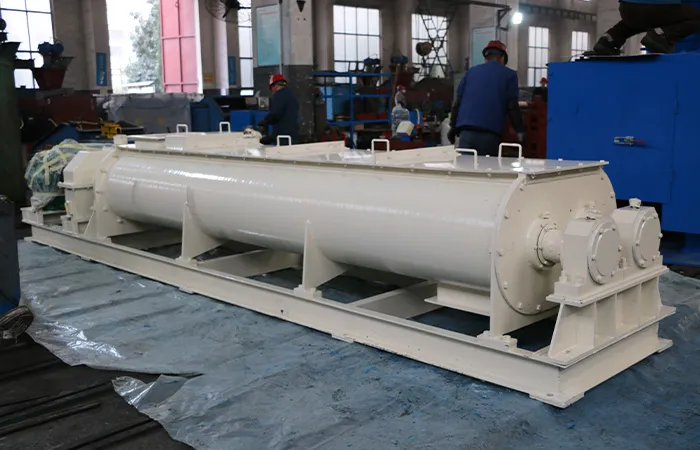Un rodamiento giratorio (or slew ring) is a large-diameter rotational rolling-element bearing designed to carry heavy, slow-turning, or slow-oscillating loads. It’s the critical component that allows massive machinery like cranes, excavadoras, and wind turbines to rotate smoothly and safely.
The load capacity is the single most important parameter when selecting a slewing bearing. It defines the maximum forces the bearing can withstand without failure. los double-row ball slewing ring is a specific design engineered to handle exceptionally high loads, particularly tilting moments.
Load Capacity of Double Row Ball Slewing Bearings
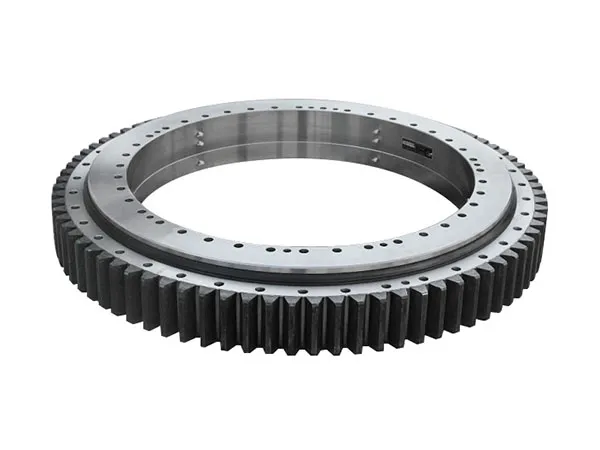
Combined Load Handling: Unlike simpler bearings, double-row ball slewing bearings are specifically designed to simultaneously handle a combination of:
Cargas axiales: Forces acting along the axis of rotation (p.ej., vertical weight from a crane boom).
Cargas radiales: Forces acting perpendicular to the axis of rotation (p.ej., side forces from a robotic arm).
Overturning Moments (Tilting Moments): Torques caused by eccentric loads that try to tip or rotate the bearing (p.ej., twisting forces on a wind turbine blade). This is where they particularly shine.
Enhanced Capacity vs. Single-Row: The presence of two rows of rolling elements significantly increases their load-bearing capabilities compared to single-row slewing bearings of the same size. This is because the load is distributed over more contact points, reducing stress on individual components.
Optimized Raceways: Many double-row designs feature two independent raceways, often with different ball diameters. The upper and lower raceways are typically designed with 90° bearing angles, which allows them to effectively bear large axial forces and tilting moments.
Suitable for High Static and Dynamic Loads: While the rotational speed of slewing bearings is generally slow, their load capacity primarily refers to their static load capacity. Double-row ball bearings are built to withstand considerable static loads and also perform well under dynamic operating conditions.
Stiffness and Stability: The double-row configuration inherently provides greater stiffness and stability, minimizing deformation and deflection even under extreme loads.
Factors Influencing Load Capacity:
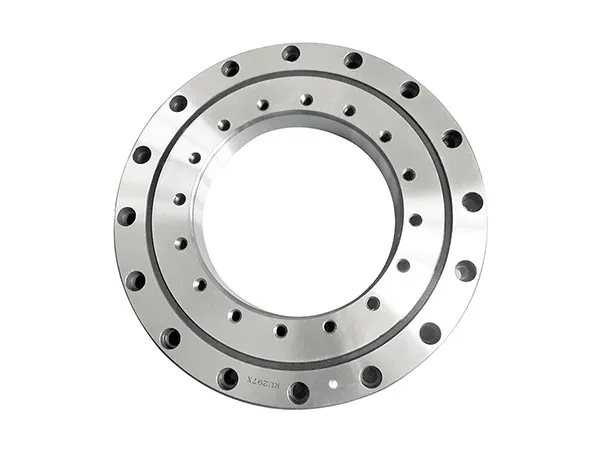
Dimensiones del rodamiento: The outer diameter, diámetro interno, and overall height of the bearing directly impact its load capacity. Larger bearings generally have higher capacities.
Ball Diameter: The size of the steel balls used plays a crucial role. Larger balls can carry more load.
Calidad de material: High-strength steels and advanced manufacturing processes contribute to the overall durability and load resistance.
Diseño de pista de rodadura: The specific geometry and heat treatment of the raceways are critical for distributing stress and ensuring longevity.
Presence of Gearing: Bearings with integrated gear teeth (internal or external) will also have specifications related to the gear’s torque capacity.
…
More about the double row of ball slewing bearings bearing capacity how detailed information can be clicked to visit: https://www.mcslewingbearings.com/a/news/load-capacity-of-double-row-ball-slewing-bearings.html

